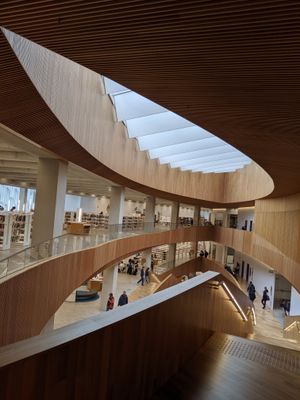Libraries have historically been interested in trees: their descriptive practices have focused on works and their manifestations. Libraries are becoming more interested in describing woods, the collections of which individual items are a part. This in turn creates an interest in collection level description. ‘Collections’ tends to be used here quite generally, to refer to, say, a particular collection in the special collections of a library, or, in another context, to a collection of metadata, say Chemical Abstracts. Collections are typically made available through services, and ‘service description’ has been closely related to collection description. For example, Medline may be available through several services.
Here are some resources of interest:
- Digital collections and content. University of Illinois at Urbana Champaign. UIUC is building a collection registry with IMLS funding. This, they say, “provides access, services, and additional functionality to a database of collection descriptions”. They have compiled a useful page of background resources on collection description which complements the specifics of their own work which is also reported. Included are links to descriptions of some of the main schemas in use for collection level description.
- Collection Description Focus at UKOLN. This has been funded by national bodies in the UK to provide advice and guidance to the library, cultural heritage and other communities on issues surrounding the design and deployment of collection level descriptions. Again, they provide access to some useful resources including presntations and newsletters at their site.
- The State Library of New South Wales provides an example of a particular institution working on collection level description in the context of its own service goals. They presented a paper describing their work at VALA 2004. See their Collection guide to dance.
- An Analytical Model of Collections and their Catalogues. This is a model report. Elegantly written, it presents an influential model for collection description influenced by the FRBR approach. It directly led to the RSLP CLD Schema, which is in turn the basis for DC-Collections and quite a bit of other work in this area. Some background is described in an article jointly written by Michael Heaney, the author of the model.
- A special issue of D-lib Magazine from some years ago was devoted to collection level description.
- MIMAS, a JISC data center in the UK, provides a couple of interesing services. The Archives Hub provides descriptions, largely collection level descriptions, for archival collections in UK universities. It also provides the JISC Information Environment Service Registry. The latter is described in a recent article, and provides collection descriptions and descriptions of services on those collections.
The Dublin Core Collection Description Working Group listserv is a venue for discussion about collection level description.



